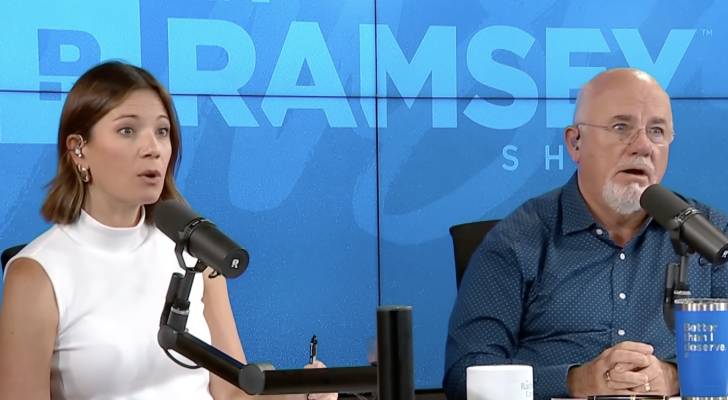‘Something worse than a recession’: Billionaire investor Ray Dalio says Trump’s economic agenda could be catapulting the US toward a world order ‘very much like the 1930s’


The founder of Bridgewater Associates, one of the world’s largest hedge funds, is voicing concern that President Donald Trump’s economic agenda could lead to “something worse than a recession.” “Right now, we are at a decision-making point and very close to a recession,” billionaire investor Ray Dalio told NBC’s Meet the Press. “And I’m worried […]
‘Mind boggling’: Some Californians making six figures now qualify for low-income housing, as report reveals 41% of households there are ‘cost burdened’ — making it the highest rate in the US


California is in the midst of a housing affordability crisis. And whether you are renting or buying, “the salaries that people once strived for often are no longer enough,” reporter Steve Large with CBS News Sacramento said. Household income levels — based on the latest data from California’s Department of Housing and Community Development — […]
Are US taxpayers getting ‘DOGE dividend’ checks? What we know about the idea floated by Trump and Musk — and if we do get them, why they might only cover a fraction of the cost of tariffs


Back in February, James Fishback, founder and CEO of investment firm Azoria, proposed the idea of a “DOGE dividend” on social media. It was an idea that caught the attention of Elon Musk. “American taxpayers deserve a ‘DOGE Dividend’: 20% the money that DOGE saves should be sent back to hard-working Americans as a tax […]
There’s a new ‘magic number’ Americans say they’ll need to retire comfortably — and it’s a shocking change since 2024. Here’s how to reach it ASAP without turning to sorcery


Humans often seek easy answers and shortcuts. This is not always a flaw, but a form of efficiency. So, it’s no surprise that we want a ‘magic’ answer to one of the biggest financial decisions we need to make: how much to save for retirement. As a result, we often have a ‘magic number’ in […]
Can buying in bulk actually cost you more? Why Americans desperate for savings should be wary of warehouse clubs like Costco


With prices rising, consumers are increasingly looking for ways to save money. And one way to do that is through warehouse club retail stores, like Sam’s Club, Costco and BJ’s Wholesale Club. But is membership all it’s cracked up to be? Shopper Britney Downing tells KHOU-11 that she saves on cereal for her five kids. […]
‘Porch pirates have clear favorites’: Texas man designs ‘smart mailbox’ to protect packages from theft — what you need to know to keep your property safe from ‘a crime of opportunity’


Online shopping is here to stay — and it seems so are porch pirates. Don’t miss I’m 49 years old and have nothing saved for retirement — what should I do? Don’t panic. Here are 6 of the easiest ways you can catch up (and fast) Robert Kiyosaki warns of a ‘Greater Depression’ coming to […]
A Minnesota nonprofit linked to $250 million fraud scheme was just raided by the Feds — the FBI believes its records claiming it fed 1 million children ‘are phony.’ How the scam worked
A Minnesota nonprofit has been raided by the Feds in a new investigation more than a year after last year’s $250 million-meal program fraud scheme. In those allegations, Feeding Our Future is said to have had scammers steal hundreds of millions of dollars from taxpayer-funded nutrition programs for hungry children during the early days of […]
‘Too old to be having these problems’: Cincinnati mom left ‘confused’ after partner walked out on her when they found out she was pregnant — so Dave Ramsey helped her build a ‘baby budget’


Johi called into the The Ramsey Show from Cincinnati, reeling from a week in which her boyfriend of 14 years deserted her — right after she discovered she was pregnant with their second child. “He was just not ready to take on that responsibility, so he left,” she said. They already have a 12-year-old child […]
This Florida family was left with staggering $700,000 in flood damage after Costco fridge installation turned into nightmare — why ‘free’ service often costs far more than you think


What should have been a straightforward home upgrade has turned into an ongoing nightmare for one family in Jacksonville, Florida. The problem started back in November, when Bradley Byrd purchased a $3,500 fridge from Costco. The fridge came with a free appliance installation service, but this “free” service didn’t exactly turn out to be without […]
‘Trash that is passed as news’: Donald Trump orders funding halt for ‘biased’ PBS, NPR — and even took a swipe at Sesame Street. How this could hurt communities across the US


A new executive order signed by President Donald Trump calls for an immediate halt to federal funding of NPR and PBS, citing what he calls “biased and partisan news coverage.” A statement from the White House called the outlets “biased” with “trash that is passed as news.” The order directs the Corporation for Public Broadcasting […]